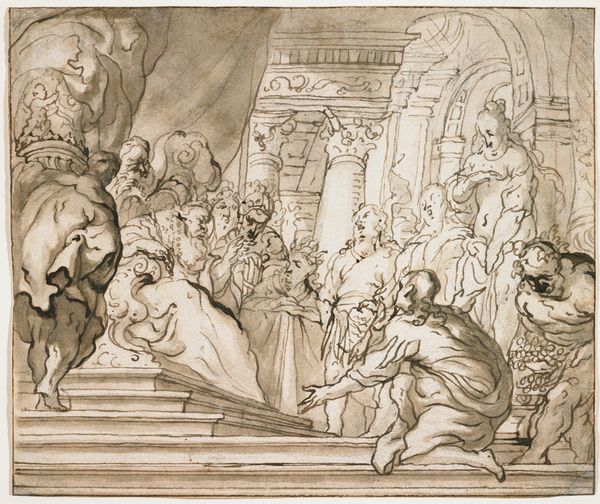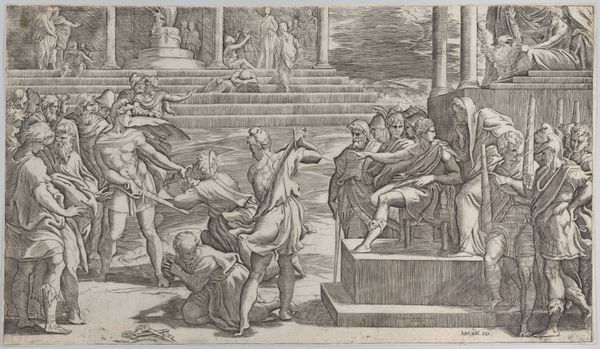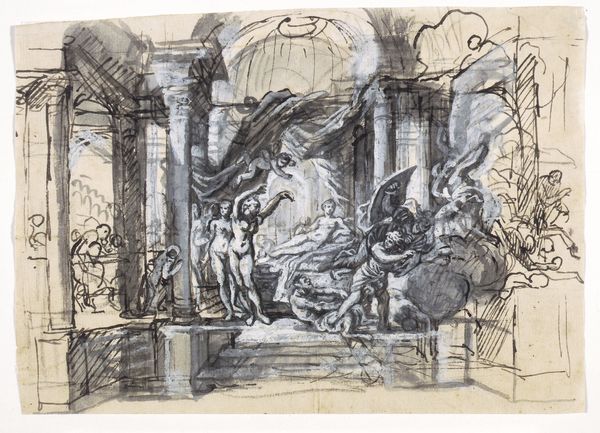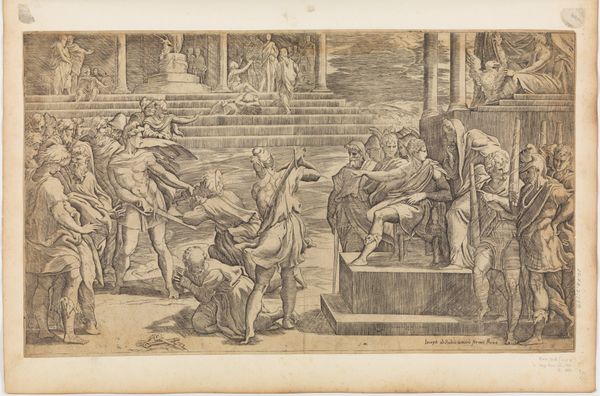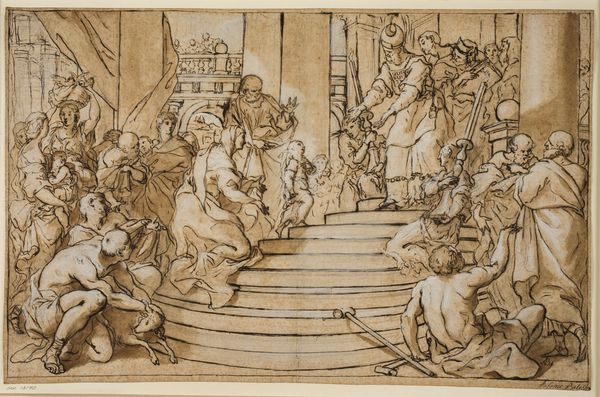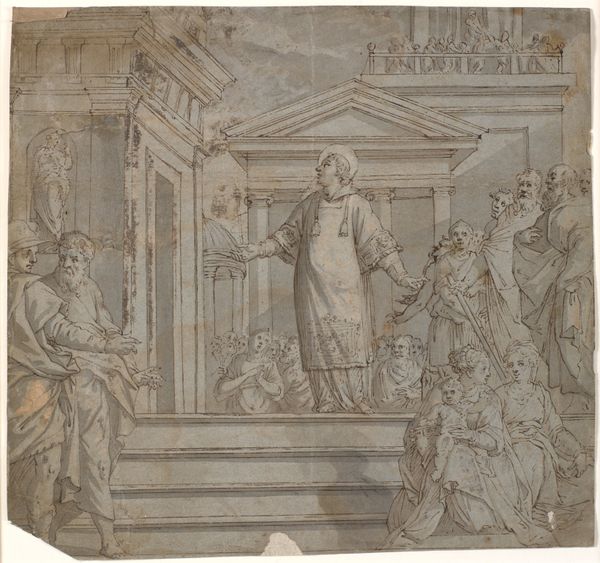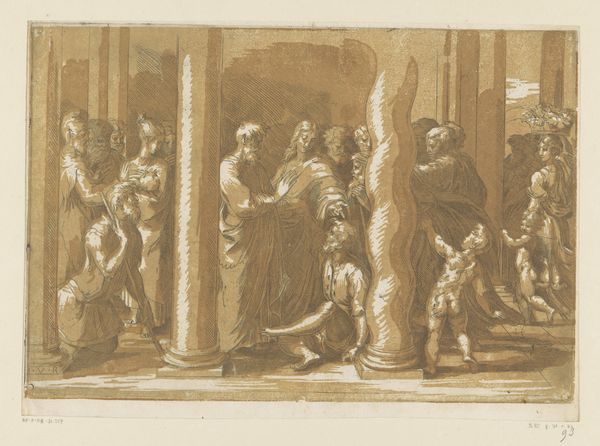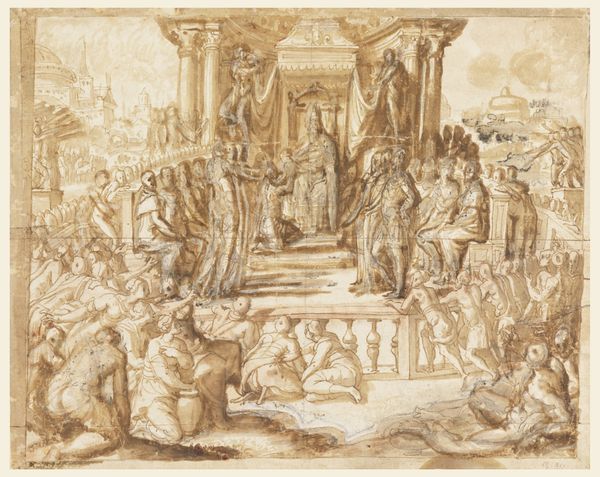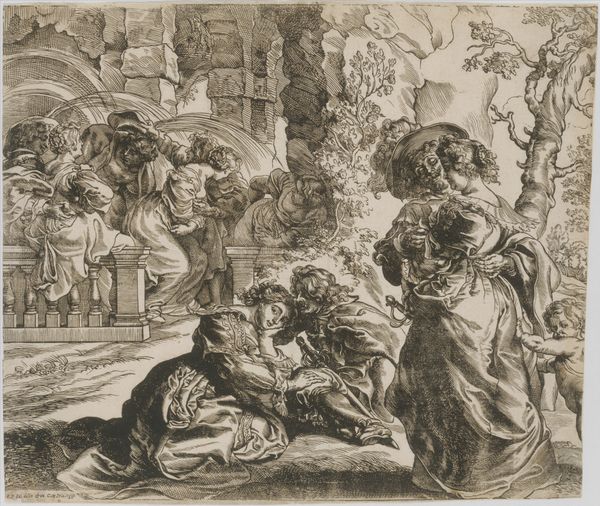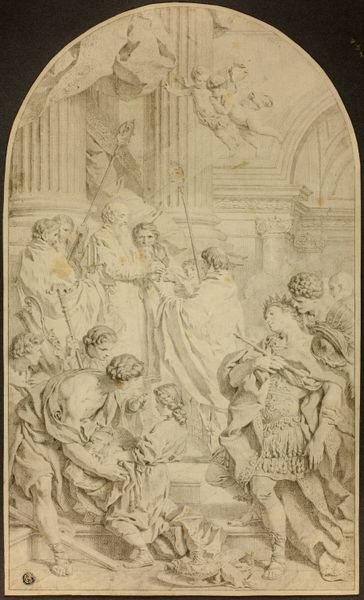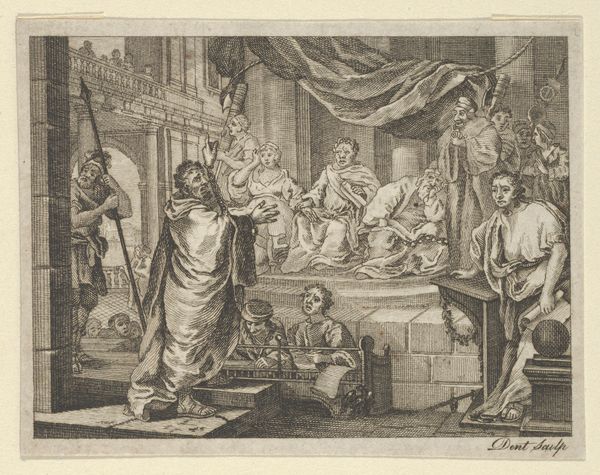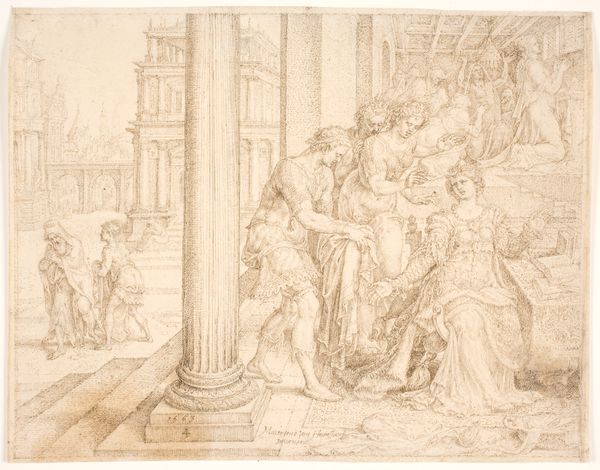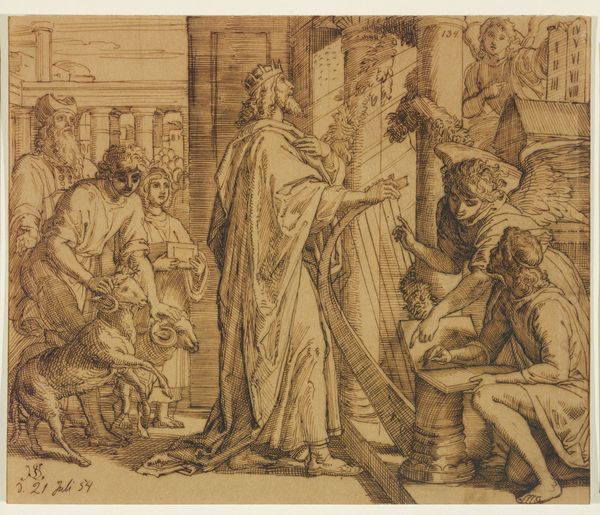
The Rospigliosi Family Paying Homage to Pope Clement IX 1667 - 1669
0:00
0:00
drawing, pen
#
drawing
#
baroque
#
figuration
#
pen
#
history-painting
Dimensions: 10 7/8 x 15 3/4 in. (27.62 x 40.01 cm) (sheet)
Copyright: Public Domain
Carlo Maratti created this pen and brown ink with brown wash drawing, titled "The Rospigliosi Family Paying Homage to Pope Clement IX," which is now held at the Minneapolis Institute of Art. The drawing presents a formal scene, structured around a central act of homage, the composition carefully balanced to convey both grandeur and intimacy. Note the use of light and shadow, achieved through the brown wash, which gives depth and volume to the figures. The drawing is divided into distinct zones, each meticulously rendered, yet unified by Maratti's elegant lines. Consider how Maratti uses architectural elements to frame the figures, enhancing the sense of space and perspective. The symmetry of the columns and arches creates a visual rhythm, guiding the viewer's eye through the scene. This formal arrangement invites us to consider the dynamics of power and devotion. The artwork's structure is an integral part of its meaning, inviting viewers to contemplate the interplay between the figures and the formal language that defines their world.
Comments
minneapolisinstituteofart almost 2 years ago
⋮
This drawing remains a puzzle. A design for a painting to be executed over a curtained doorway, or "portiere," it depicts a family kneeling before Clement IX. The pope can be identified by the appearance of his family coat-of-arms, the four diamonds of the Rospigliosi, crowned by the papal tiara and crossed keys, which adorn both his papal throne and the archway in the background. The list of names in the lower left corner provides a key to identifying the numbered individuals in the scene. It has been suggested that they might be Clement IX's family, yet few of the names correspond to well known Rospigliosi family members, suggesting it might portray another family honoring the pope. The attribution of the drawing to Carlo Maratti was undoubtedly put forth because the successful Roman painter was known to have worked for Clement, yet it is not executed in his usual style. It is hoped that further research will uncover the identity of the sitters, so carefully recorded for posterity, and the artist who drew them.
Join the conversation
Join millions of artists and users on Artera today and experience the ultimate creative platform.
